Gigabyte out sources the PCBs (Printed Circuit Boards) it uses for its motherboards to a
PCB manufacturer. These arrive already etched with the necessary circuit
traces, pre-coloured and pre-drilled with the holes that are needed to insert
components like the CPU socket and PCI slots. Other than this though, they
are completely bare, containing no components or solder.
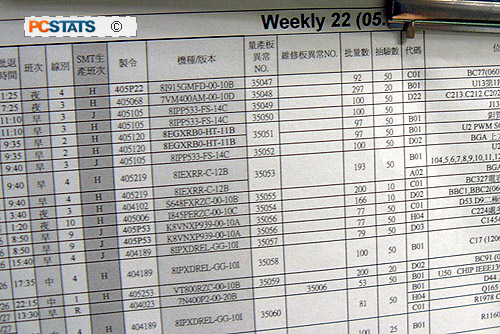
Weekly
production sheet identifying the motherboard models
|
These bare PCB boards are stored on racks and loaded into the automated feeder for the
DEK Infinity solder paste printer to start their journey towards becoming completed
motherboards.
Solder Paste Screen Printing
Before being sent to the SMT (Surface Mount Technology) machines
that will mount chips and resistors onto the PCB, each motherboard must be
prepared by solder paste printing, a technique which involves spreading
solder paste over a nickel sheet, laser cut to correspond to
the motherboard being assembled. This nickel sheet 'screen' is then moved
into the printer and the motherboard positioned precisely under it. The paste is
distributed over the screen by the printer so it is squeezed through
the holes in the nickel sheet to adhere to the motherboard underneath in
precise areas.
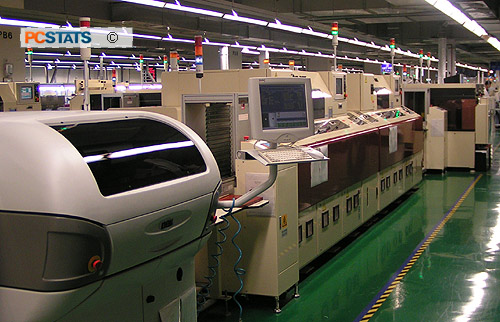
The DEK
Infinity solder paste screen printer (left)
|
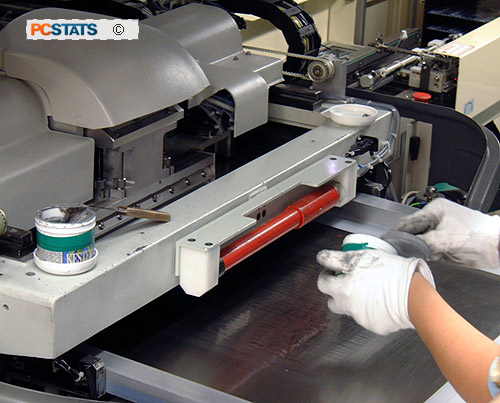
Mixing and
applying the solder paste to the nickel screen
|
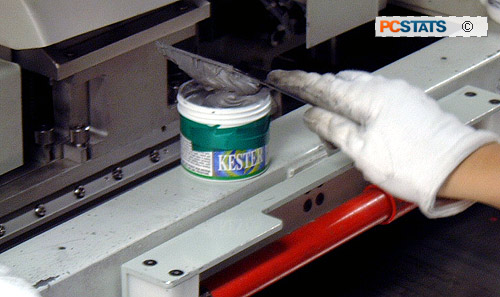
The solder paste: particles of solder suspended in
flux |
After having the solder paste applied, the bare
PCB boards are stacked into an automated vertical storage rack called
a PCB Buffer Loader, until ready to be passed through to the SMT
assembly machine.
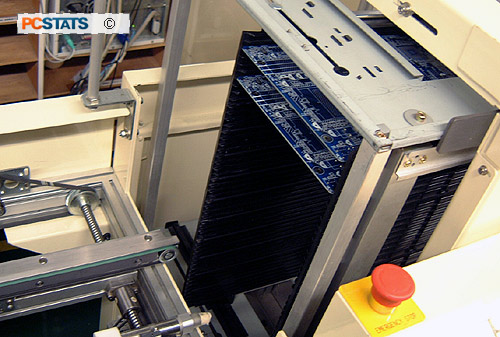
Solder
printed motherboards awaiting the SMT process
|

